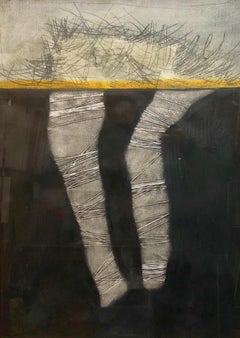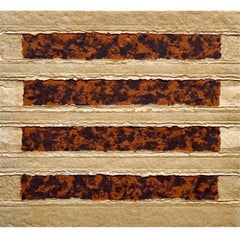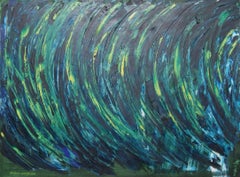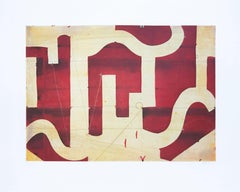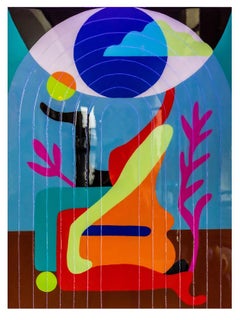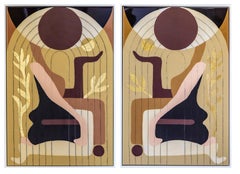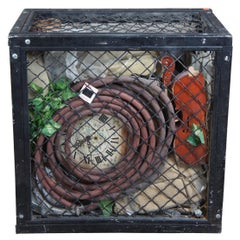Abstract String Art
1970s Abstract Abstract Paintings
Paper, Oil
1970s Abstract Abstract Paintings
Mixed Media, Handmade Paper
2010s Abstract Abstract Paintings
Canvas, Mixed Media
Early 2000s Abstract Expressionist Abstract Paintings
Oil
21st Century and Contemporary Abstract Abstract Prints
Etching, Aquatint
2010s Contemporary Abstract Paintings
Wood, Acrylic, Resin, Mixed Media
2010s Contemporary Abstract Paintings
Gold
21st Century and Contemporary Abstract Prints
Etching, Aquatint
1990s American Modern Abstract Sculptures
Metal, Other
1980s American Modern Abstract Prints
Lithograph
21st Century and Contemporary Abstract Mixed Media
Mixed Media
21st Century and Contemporary Abstract Mixed Media
Mixed Media
2010s Contemporary Abstract Photography
String, Glass, Wood, Photographic Paper
21st Century and Contemporary Contemporary Landscape Photography
C Print
21st Century and Contemporary Contemporary Landscape Photography
C Print
20th Century Modern Figurative Paintings
Gouache
21st Century and Contemporary Contemporary Landscape Photography
C Print
21st Century and Contemporary Contemporary Landscape Photography
C Print
2010s Abstract Mixed Media
Mixed Media
21st Century and Contemporary Contemporary Landscape Photography
C Print
2010s Contemporary Landscape Photography
C Print
2010s Contemporary Landscape Photography
C Print
21st Century and Contemporary Abstract Landscape Photography
Digital Pigment
21st Century and Contemporary Abstract Landscape Photography
Digital Pigment
21st Century and Contemporary Abstract Landscape Photography
Digital Pigment
21st Century and Contemporary Abstract Landscape Photography
Digital Pigment
21st Century and Contemporary Contemporary Landscape Photography
C Print
2010s Abstract Abstract Paintings
Canvas, Oil
Early 2000s Abstract Abstract Paintings
Acrylic
1990s Abstract Abstract Paintings
Canvas, Oil
2010s Abstract Abstract Paintings
Acrylic, Canvas, Oil
2010s Abstract Abstract Paintings
Canvas, Oil, Acrylic
2010s Abstract Expressionist Abstract Paintings
Canvas, Oil, Acrylic
21st Century and Contemporary Abstract Expressionist Abstract Paintings
Oil, Acrylic
2010s Abstract Expressionist Abstract Paintings
Canvas, Oil, Acrylic
1980s Op Art Abstract Paintings
21st Century and Contemporary Abstract Paintings
Paper, Ink
2010s Contemporary Abstract Sculptures
Canvas, Thread
2010s Contemporary Abstract Sculptures
Canvas, Thread
2010s Abstract Abstract Paintings
Mixed Media
21st Century and Contemporary Abstract Abstract Paintings
Ink, Paper
21st Century and Contemporary Abstract Abstract Paintings
Paper, Ink, Sumi Ink
Early 2000s Abstract Paintings
Ink, Paper
21st Century and Contemporary Abstract Paintings
Paper, Ink
Early 2000s Abstract Abstract Paintings
Paper, Ink, Sumi Ink
2010s Contemporary Abstract Paintings
Paper, Acrylic, Graphite
2010s Contemporary Abstract Paintings
Paper, Acrylic, Graphite
2010s Contemporary Abstract Paintings
Paper, Acrylic, Graphite
Vintage 1960s American Modern Decorative Art
Burlap, String
1970s Abstract Abstract Paintings
Paper, Oil
1970s Abstract Abstract Paintings
Paper, Oil
2010s Abstract Paintings
Vinyl
21st Century and Contemporary Abstract Abstract Paintings
Acrylic, Canvas
21st Century and Contemporary Minimalist Abstract Paintings
Acrylic, Gesso, Mixed Media, Newsprint, Resin, Wood
2010s Contemporary Abstract Prints
Paint, Paper
21st Century and Contemporary Abstract Abstract Paintings
Oil, Board
21st Century and Contemporary Abstract Abstract Prints
Etching
20th Century Abstract Abstract Paintings
Watercolor
Early 2000s Contemporary Abstract Prints
Etching
Contemporary Abstract Prints
Etching
- 1
Abstract String Art For Sale on 1stDibs
How Much is a Abstract String Art?
- 1stDibs ExpertSeptember 25, 2019
Wassily Kandinsky is the father of abstract art.
- What does abstract mean in art?1 Answer1stDibs ExpertFebruary 22, 2021Abstract, in art, refers to art that rejects visual reality. Instead, abstract arts utilizes shapes, colors, forms and other gestural marks to convey a certain feeling and reality.
- 1stDibs ExpertSeptember 25, 2019
No, abstract art, by definition, is not representational. Although the shapes in an abstract composition may be based on real world objects, these objects are not recognizable in the finished work.
- How did abstract art come about?1 Answer1stDibs ExpertSeptember 25, 2019
Abstract art grew out of the desire by artists in the early 20th century, like Wassily Kandinsky, to create “pure art,” grounded not in visual reality but in the artist’s imagination.
- 1stDibs ExpertApril 26, 2024To describe abstract art, focus on its elements. Take notice of the types of lines and shapes the work features. Discuss its color and value, the term for the interplay between light and dark in a piece. You can also consider its texture, the materials used to produce it and how it fits into the space that surrounds it. Find a wide range of abstract art on 1stDibs.
- What influenced abstract art?1 Answer1stDibs ExpertSeptember 25, 2019
Abstract art was influenced by Postimpressionism.
- La ChrysomeleFebruary 23, 2021A definition of abstract art is art through which the artist doesn't attempt a visual depiction of the world. The artist may have other intentions : conveying a pure emotion, or achieving what (s)he perceives as visual perfection, etc. There are many kinds of abstract art : lyrical abstraction, geometrical abstraction, action painting… There is also an infinite spectrum between hyperrealism and pure abstraction, since one can argue that any brush stroke is by itself an abstraction of the reality — let alone flat color patches.
- 1stDibs ExpertApril 5, 2022Abstract art is meant to achieve an effect as opposed to representing an object, person, or a scene. Three characteristics of abstract art include: being non-representational art; valuation of shapes, colors, lines, and textures; and subjective art. On 1stDibs, find a variety of original abstract artwork from top artists.
- 1stDibs ExpertSeptember 25, 2019
Yes, Cubism is a form of abstract art.
- Why do people like abstract art?1 Answer1stDibs ExpertMay 30, 2024The reasons why people like abstract art vary. Some like the fact that they can interpret abstract pieces however they desire and enjoy using their imaginations to find meaning in various works. Others experience an emotional reaction when viewing abstract art and consider it to be moving as a result. In addition, people may appreciate the creativity and inventiveness that the creation of abstract art requires. On 1stDibs, shop a diverse assortment of abstract art.
- 1stDibs ExpertFebruary 1, 2024The six elements of abstract art are color, form, line, shape, texture and value. Color refers to the various hues featured in a composition, while form refers to the subjects or elements of a piece. Lines and shapes are the components that make up the artwork. Textures include both physical differences in the surface of a work and effects that create the illusion of textural variations. Value, the final element, describes how light or dark the colors are. On 1stDibs, shop a wide range of abstract art.
- What makes good abstract art?1 Answer1stDibs ExpertMay 30, 2024What makes good abstract art is largely subjective. People tend to think of abstract art as good when it evokes an emotional response in them. Critics may judge abstract art based on its originality and creativity, as well as on the skill and technique of the artist. Shop a diverse assortment of abstract art on 1stDibs.
- 1stDibs ExpertFebruary 13, 2024There is no single painter who experimented with abstract art and Cubism. A number of artists worked in Cubism, a style of abstract art in which reality was fragmented into flat, geometric forms. Historians generally credit Georges Braque and Pablo Picasso as being the fathers of Cubism. Other Cubist painters include Fernand Léger, Alexander Archipenko, Marcel Duchamp, Juan Gris and Jean Metzinger. Shop a collection of Cubist art on 1stDibs.
- 1stDibs ExpertSeptember 23, 2024Kandinsky was called the Father of Abstract Art because he was part of a crucial moment in art history. He was influenced by styles ranging from Surrealism to Fauvism and was a leading figure in bringing together Der Blaue Reiter, a group of avant-garde artists in Munich who explored spiritual concepts through their art as a response to the materialism of the time. Wassily Kandinsky also led courses on analytical drawing and color at the Bauhaus after being appointed by founder and architect Walter Gropius to teach in Weimar in 1922. He taught at all three of the legendary school’s locations and remained with the institution until its forced closure by the Nazis in 1933. Through his work, Kandinsky pushed modern art closer to total abstraction and inspired artists like Willem de Kooning and Joan Mitchell. Explore a range of Wassily Kandinsky art on 1stDibs.
